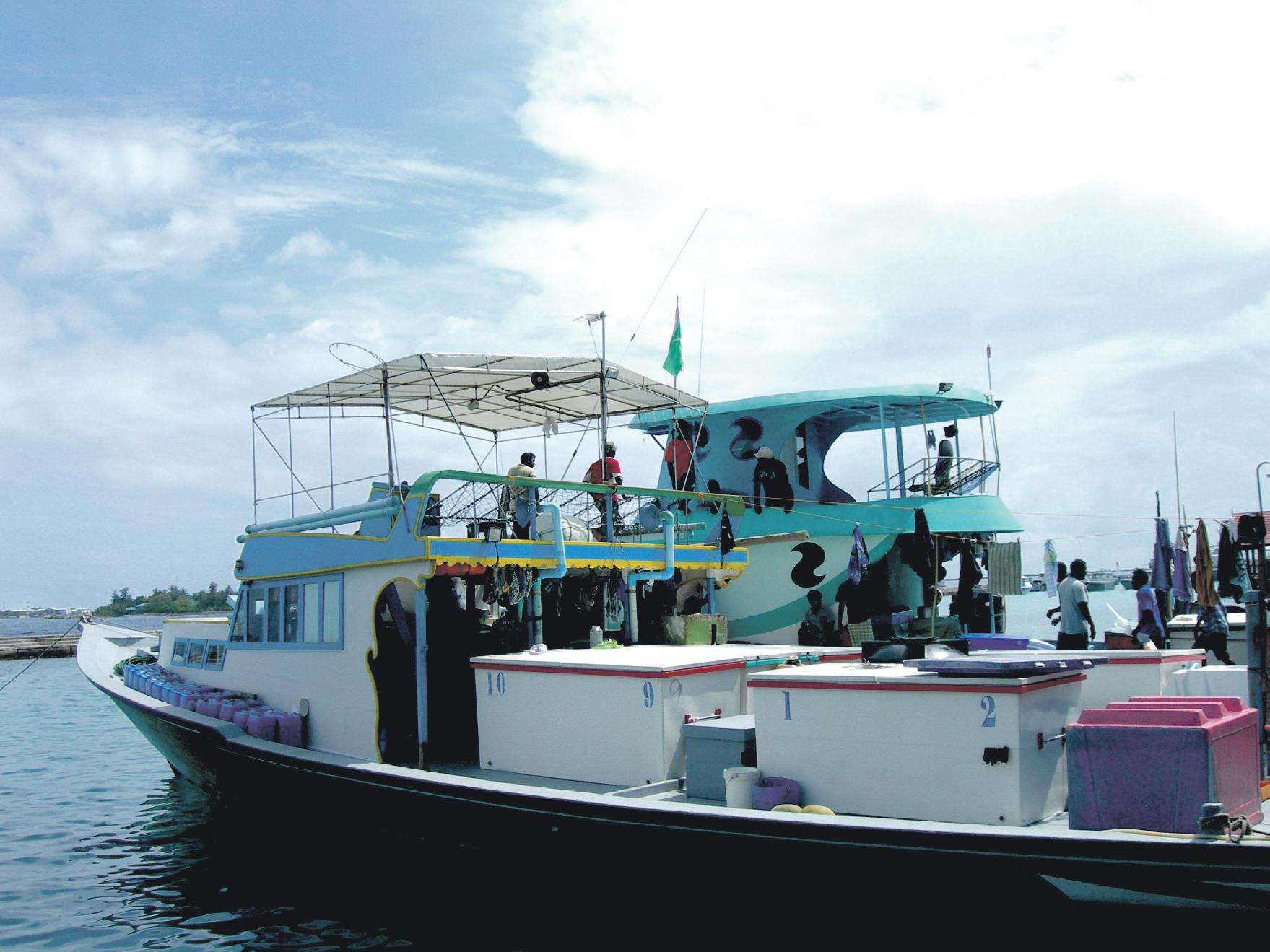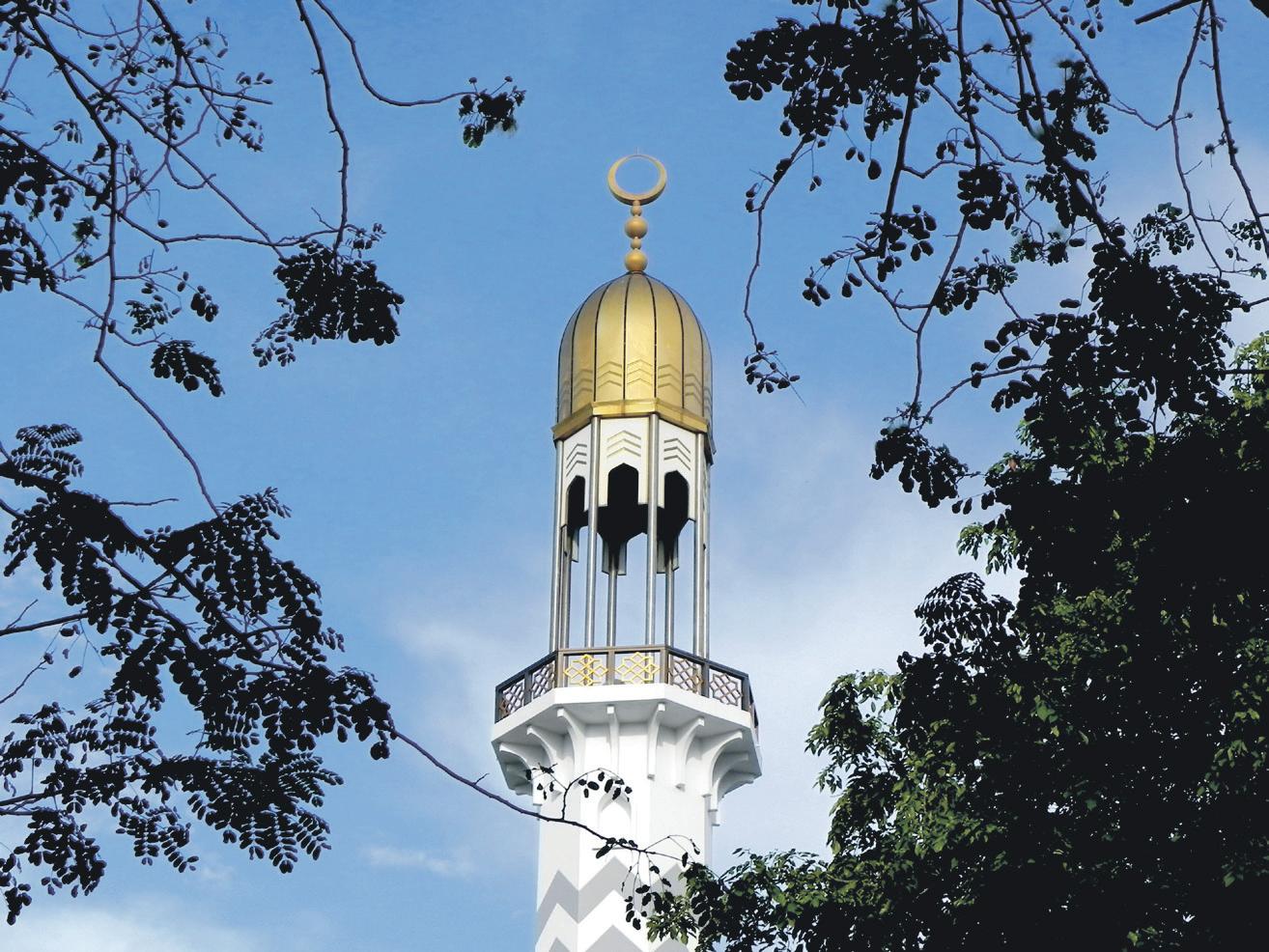
3 minute read
Rest and repose in the
from 2012-04 Sydney (2)
by Indian Link
There is perhaps no other international airport on Earth other than in the Maldives where, on arriving, you have to get a boat to be transferred to your hotel.
This is because the nation comprises of numerous smallsized islands with the airport located in one, while hotels and resorts are dotted on others, the nearest being Male, the capital city, less than 2km across the water.
Ecologically fragile nation
An ecological quirk in the middle of the Indian Ocean, the Maldives is a series of ancient coral reefs that surfaced around the sides of prehistoric volcanoes.
Those immense structures have since sunk into the ocean, leaving behind coral islands of incredible natural splendour, now themselves being colonized by travellers seeking rampant pampering and romance.
For the numerically minded, the archipelago comprises of 1,190 low-lying islands scattered across the Equator, in groups of 26 naturally occurring atolls which are ring-shaped coral reef enclosing a lagoon, a geographical feature supposedly unique to the Maldives. The total area controlled by the nation is around 90,000 square km, but most of it is under water. A population of 340,000 inhabit 200 islands, and about 100 more from the rest have been developed into exotic hideouts for tourists seeking their own hideaway, veiled from the hectic hustle and bustle of city life.
As an unfortunate victim of climate change, this paradiselike archipelago survives today standing just two meters above sea level. Unless drastic measures are undertaken, ecological pundits warn that by the end of the century the ocean will swallow all the remaining land and the Maldives will be wiped off the world map. This verdict, as a blessing in disguise, inspires many like me to step on its shores before it vanishes, to soak up its history, culture and unmatched natural splendours.
Early Settlers
Located around 400 miles southwest from India and Sri Lanka, modern Maldives boasts of a fascinating past. Speculations indicate that earliest settlers were Dravidians from South India, Yakka and Naga from Sri Lanka and Aryans from the Indus Valley. Being on the sea route to India, it later became a meeting point of Arab, African, Malay and Indonesian mariners. Maldavian faces reflect all of these influences, contributing to a cultural and racial melting pot. Once ruled by Sultans who accepted Islam as their religion from the Arab traders in 1153, the nation has remained independent all through its history except for a 15-yearlong occupation by the Portuguese in the mid 16th century. However in 1887, it signed a protection treaty with the British to prevent Borah merchants from Bombay shifting their interest from business to government. The arrangement ended in 1965 with the Maldives becoming a Republic three years later.

Capital city Male
Home to one third of the nation’s population, Male is an interesting place to visit. Said to be the world’s smallest urban capital and obviously thickly populated, life bustles in this 2sq km island along its waterfront promenade, flanked on one side with key administrative buildings including the President’s office, and dotted on the other with several jetties from where boats depart for the airport and other islands. At one end of the stretch is the main market selling local produce including seafood, while on the other rests an artificial beach, a favourite spot for locals to swim, chill out or play impromptu football matches. Both locations are ideal to experience a taste of the Maldivian lifestyle and shake hands with locals, who speak good English, though their national language is Divehi, which contains Arabic, Sinhalese and Indian influences. Other sites of interest are the National Museum, Grand Friday Mosque, Old Friday Mosque, Tombs of former Sultans and flower-filled Sultan Park.

Central to all of this is the Traders Hotel, a five-minute complimentary boat ride from the airport. It is the best accommodation in town where a highly recommended spa treatment gets rid of the jetlag syndrome and prepares you for a once in a lifetime tropical escape in one of the Maldives’ 100-odd privately owned luxury resorts.
Luxury hideouts
Most Maldivian resorts maintain a distinguishing class of their own that express nothing but the epitome of luxury. The Taj Exotica, Anantara, Angsana, Four Seasons, Banyan Tree, One & Only Reethi Rah are just few from the long list that are favourites among celebrities and holiday makers who look for the best of everything.
However in 1972 when tourism began its journey here, Kurumba Maldives surfaced as the nation’s first privately owned resort and still remains an exotic hideout of distinctive style and panache. Only 10 minutes from the airport by boat, this classy resort promises to captivate guests with an unparalleled choice of accommodation facilities, dining experiences, leisure activities and entertainment, while maintaining idyllic refuges and quiet spaces for relaxation to create the perfect balance for a holiday in paradise, ideal for all, from newlyweds to families with kids. For years it has been the resort of choice for visiting heads of states and world leaders, most recent guest being the Indian Prime Minister Dr Manmohan Singh, who stayed there on his way back home after attending the SAARC conference in the Maldives.
In any Maldavian resort the sun, sea and sand are the three simple realities that engage tourists from far and wide to experience their own ‘Robinson Crusoe’ island getaway, sleeping either in a thatched roof bungalow directly on the beach or in a water villa on stilts in the lagoon.









